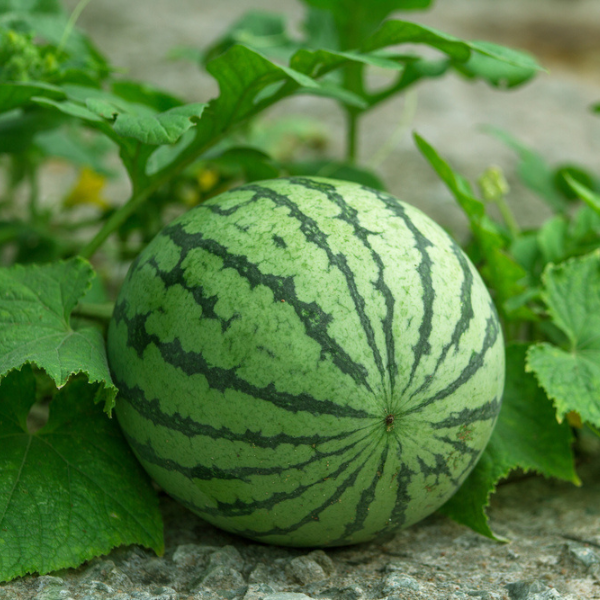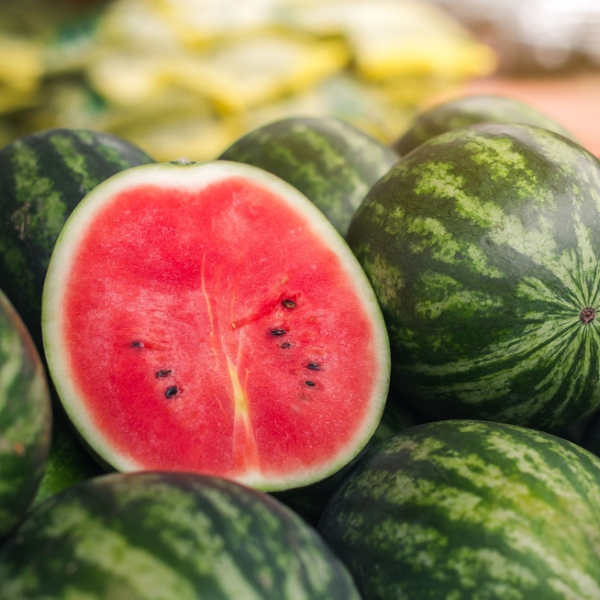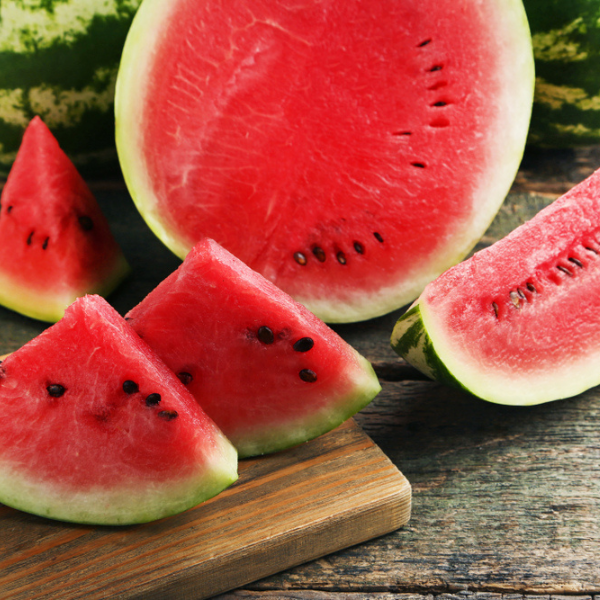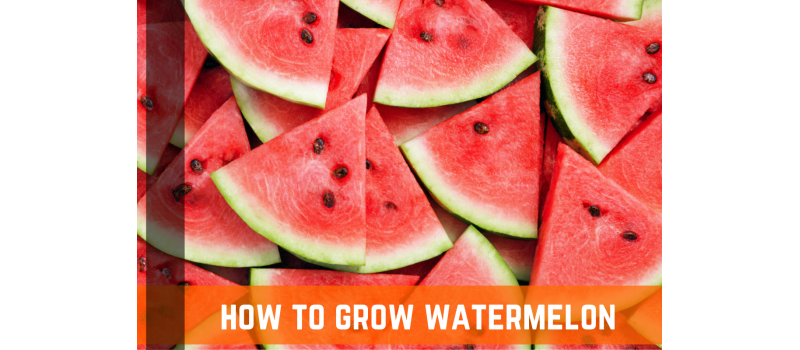Watermelon, which is appropriately named, is 92 % and was first used as a water supply by the ancients. In southern Africa, where the hardy, drought-tolerant predecessor of watermelon thrived, the fruit has a 5000-year history. Although we are unsure of the actual name of this plant, we do know that native people in the Kalahari Desert area valued it for its capacity to hold water.
Its flesh was quite bitter, unlike modern watermelons. There is speculation that native inhabitants of the area also roasted and consumed the seeds of this plant as food in addition to benefiting from its water content. In the modern day, this is one of the most popular summer fruits, and is often associated with cookouts in warm weather.
Watermelon tends to be a staple fruit in American households so it is no wonder why anyone would want to grow the big green beast. There are a variety of different types of watermelons, so one of the first things a grower must do is decide the species of watermelon they would like to plant in their home garden.

Watermelon Growing Conditions
Warm soil is necessary for growing watermelons. Before the soil temperature rises up above 70 degrees Fahrenheit, which usually happens around the time flowers bloom in northern zones, don't tuck any plants into the garden. Wait for at least two weeks after the last frost date in your area to be safe. Cover the ground with black plastic before planting to accelerate soil warming.
The ideal soil pH range for nutrient uptake is between 6 and 6.8, while plants may withstand a pH as low as 5. Plants should typically be spaced 3 to 5 feet apart to allow watermelon vines more than enough room to spread their vines. To keep insects out and trap warm air near plants, protect seedlings with floating row coverings after planting. Make sure your plants receive a consistent supply of nutrition all throughout growth season as watermelons take a while to mature.
To avoid rot and safeguard fruit from insects and rodents, keep watermelon that is about to ripen away from the soil. Fruit should be placed on a straw or cardboard bed once it reaches around the diameter of a softball. Fruit that is placed on a surface that reflects light, such as aluminum foil, will focus heat and ripen more quickly.
If big animals like groundhogs find your melons, cover the maturing fruit with laundry baskets that have been held in place with a few bricks. Remove any flowers that begin to form within 50 days of the first predicted frost date in your location in colder climates. The larger fruits that are still on the tree will ripen before the first frost thanks to this.
How To Plant & Grow Watermelon
Plant seeds 1/4 to 1/2 inch deep in containers indoors or 1/2 to 1 inch deep outside. If direct sowing outside, plant four to six seeds per hill and thin to two to three seedlings later. From the time of planting until fruit starts to form, watering is crucial. Melon plants require between one and two inches of water every week when they are growing, flowering, and bearing fruit. Keep the soil wet but not soggy.
In the morning, water the vines at their base, being careful not to wet the foliage or water from above. Once fruit is grown, watering can be reduced. The sweetest melon is produced in dry climates. If you decide to fertilize, be sure that it contains more nitrogen than phosphate and potassium because this will promote the growth of leaves and vines. Use a fertilizer containing less nitrogen to promote flowers and fruit instead after flowering starts.
We enjoy using a fertilizer made from seaweed. Keep the soil wet but not soggy. In the morning, water the vines at their base, being careful not to wet the foliage or water from above. Once fruit is grown, watering can be reduced. The sweetest melon is produced in dry climates.

Care & Maintenance
Water is necessary for the growth and ongoing development of watermelon plants, so you should make sure you provide your plants just the right amount of water. Once a plant has taken root, water it well and regularly, but less frequently. Because these plants only need one to two inches of water per week, you might not need to irrigate during rainy weeks.
Consistent watering of fruits is essential as they ripen to avoid fruit shattering. Watermelons can split or fracture while ripening because they can retain so much water, so if irrigation is irregular. Withhold water until the fruit is about a week from maturity (you may figure this depending on your planting date as well as the variety's typical length of time to maturity) to make sure your fruits are as delicious as possible.
In your melons, a bit less water will result in more concentrated sugars. Some people think that clipping off the expanding shoots of a vine as watermelons begin to ripen will force the plant to focus all of its energy on fruit ripening. This is untrue, according to recent study. The sugars that make fruit sweet are made in a vine's leaves, thus anything that lowers the overall number of leaves accessible for sugar production effectively decreases the sweetness of the melon.
Harvesting Watermelon
A few indications can teach you how to recognize when a watermelon is ready, but it takes some practice to judge a watermelon's ripeness. The rind of the watermelon will start to look dull. Close to the place where the melon connects, the vine's wavy tendrils will turn brown.
The rind shouldn't be accessible to your thumbnail. The portion that is in contact with the ground will transform from a light green to a light yellow color. It's recommended to consume watermelons right away. Cut watermelon should be kept in the fridge because it only lasts a few days.
Melons should not be kept in the refrigerator uncut. If at all feasible, choose a cold room between 45 and 50 degrees Fahrenheit. Melons can stay uncut in this atmosphere for a maximum of two weeks.

Common Pests & Diseases
The cucumber beetle is the main pest of watermelons. Check early for the eggs. Many of them will be kept away from the vines if you use row coverings. Watermelons are also susceptible to mites, aphids, and vine borers. Numerous ailments, such as fusarium wilt, anthracnose, alternaria leaf spot, and stem blight, might be an issue. Select resistant watermelon types if these illnesses are common.
The powdery mildew that can sometimes affect watermelons is rarely harmful; it is merely ugly. Instead of watering from above, water at ground level to prevent soil spores from spilling onto the foliage and generating mildew.

